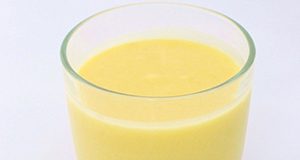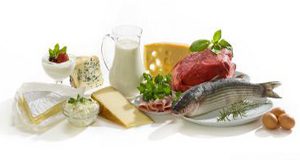Supplemental nutrition drinks are often used in hospitals and adult care homes to help nourish those who may be eating poorly. More recently, these drinks have become available for purchase by consumers. This 2-page publication explores the question that many older adults ask: “Do I need supplemental nutrition drinks?” Written by Claire Marie Fassett, Nancy J. Gal, and Wendy J. Dahl and published by the UF/IFAS Department of Food Science and Human Nutrition, August 2018.
http://edis.ifas.ufl.edu/fs315
Tag: Wendy J. Dahl
How Many Meals Should I Eat Each Day?
For older adults who want to stay healthy, it’s a common question: should I eat three meals a day, or is two adequate? Also, how much should I snack? This 2-page publication discusses the appropriate amount of daily food consumption in older adults. Written by Wendy J. Dahl and Zainab Alyousif and published by the UF/IFAS Department of Food Science and Human Nutrition, August 2018.
http://edis.ifas.ufl.edu/fs313
Dietary Fiber and Chronic Disease
Dietary fiber supports health in various ways. This 2-page document describes the relationships between dietary fiber and prevention and treatment of chronic disease. Written by Wendy J. Dahl and published by the UF/IFAS Department of Food Science and Human Nutrition, August 2018.
http://edis.ifas.ufl.edu/fs314
Salt: Should I Cut Back?
Sodium is important for our body to maintain fluid balance, blood volume, and blood pressure; however, many people consume more dietary sodium (from salt) than needed. This 3-page publication explores the health effects of excessive sodium intake and ways to decrease intake of this mineral. Written by Asmaa Fatani, Nancy J. Gal, and Wendy J. Dahl and published by the UF/IFAS Department of Food Science and Human Nutrition, August 2018.
http://edis.ifas.ufl.edu/fs312
Enfermedad Renal Cronica (ERC): Una guia de alimentos can alto contenido de fibra

Vivir con la enfermedad renal crónica (ERC) presenta muchos desafíos, y la dieta es uno de ellos. Las personas con ERC pueden tener dificultades para consumir suficientes alimentos ricos en fibra al seguir las otras recomendaciones de dieta para la ERC..
This is the Spanish-language version of FS305, CKD: A Guide to Higher Fiber Foods. Written by Wendy J. Dahl and published by the UF/IFAS Department of Food Science and Human Nutrition, April 2018.
http://edis.ifas.ufl.edu/fs309
Alimentos en pure: Postres de lenteja
Una dieta en puré puede ser recomendada para personas con problemas para tragar. Es una dieta que requiere que los alimentos sean mezclados o procesados para obtener una textura suave, similar a un pudín..
This is the Spanish-language version of FS306, Pureéd Foods: Lentil Desserts. Written by Wendy J. Dahl and published by the UF/IFAS Department of Food Science and Human Nutrition, April 2018.
http://edis.ifas.ufl.edu/fs310
La Dieta y la Salud del Cerebro
Seguir una dieta saludable proporciona muchos beneficios a lo largo del ciclo de la vida. Mantener buenos hábitos de alimentación a medida que envejecemos puede ser especialmente útil para preservar la salud cognitiva―la capacidad de recordar, aprender y tomar decisiones.
This is the Spanish-language version of FSHN17-9/FS304, Diet and Brain Health. This 4-page document provides tips for healthful eating that may help to maximize brain health in older adults. Written by Wendy J. Dahl and published by the UF/IFAS Department of Food Science and Human Nutrition, April 2018.
http://edis.ifas.ufl.edu/fs307
La Proteina y El Adulto Mayor
La proteína es un nutriente que provee energía a nuestro cuerpo y está involucrado en muchas funciones vitales como el reparo, mantenimiento y buen funcionamiento del sistema inmunológico.
This is the Spanish-language version of FSHN17-2/FS290, Protein and the Older Adult. This 3-page document describes the nutritional characteristics and requirements of protein in older adults. Written by Wendy J. Dahl and published by the UF/IFAS Department of Food Science and Human Nutrition, April 2018.
http://edis.ifas.ufl.edu/fs308
Pureed Foods: Lentil Desserts
A pureed diet may be recommended for individuals with swallowing problems; however, it can be challenging for those with a puréed diet to receive adequate protein, fiber, vitamins, and minerals. This 4-page document provides recipes made with puréed lentils, offering desserts that are both tasty and nutrient-dense. Written by Wendy J. Dahl and Alison O’Donoughue and published by the UF/IFAS Department of Food Science and Human Nutrition, March 2018.
http://edis.ifas.ufl.edu/fs306
CKD: A Guide to Higher Fiber Foods
Living with chronic kidney disease (CKD) presents many challenges, and diet is one of them. People with CKD may find it difficult to consume enough fiber-rich foods while following the other diet recommendations for CKD. This 5-page guide will discuss the health benefits of fiber and provide some examples of fiber-rich foods that may be good choices for people with CKD. Written by Wendy J. Dahl and Nancy J. Gal and published by the UF/IFAS Department of Food Science and Human Nutrition, January 2018.
http://edis.ifas.ufl.edu/fs305
Diet and Brain Health
Following a healthful diet provides many benefits throughout the life cycle. Maintaining good eating habits as we age can be especially helpful to preserve cognitive health (the ability to remember, learn, and make decisions). This 3-page publication provides tips for healthful eating that may help to maximize brain health in older adults. Written by Pooja Tolani and Wendy J. Dahl and published by the UF/IFAS Department of Food Science and Human Nutrition, January 2018.
http://edis.ifas.ufl.edu/fs304
Protein and the Older Adult

Protein is a nutrient that provides energy for our bodies and is involved in many vital functions, such as repair, maintenance, and immune function. This three-page document discusses the protein requirements for older adults. Written by Amanda L. Ford and Wendy J. Dahl and published by the Food Science and Human Nutrition Department.
http://edis.ifas.ufl.edu/fs290
Facts about Fats and Oils
Fats and oils are important for good health. Fats provide your body with energy while oils are needed in the diet in small amounts because they are a major source of Vitamin E, which has antioxidant properties. This four-page fact sheet describes the different types of fats and oils and tips for choosing the healthiest types.Written by Tiffany N. Stodtko and Wendy J. Dahl and published by the Food Science and Human Nutrition Department.
http://edis.ifas.ufl.edu/fs281
De Compras para la Salud: Cereales de Desayuno
It is no secret that breakfast is an important meal. Eating breakfast provides you with physical and mental energy to start the day, along with vitamins and minerals. Cereal is a quick, versatile, and budget-friendly breakfast choice. The benefits of eating a healthy cereal include increased fiber intake and lower body weight. But navigating the cereal aisle at your local grocery store can be an overwhelming experience. This three-page fact sheet is the Spanish language version of Shopping for Health: Breakfast Cereals, http://edis.ifas.ufl.edu/fs274. Written by Jenna Seckar and Wendy J. Dahl and published by the Food Science and Human Nutrition Department.
http://edis.ifas.ufl.edu/fs280
De Compras para la Salud: Aperitivos
At first glance, you might think that snacking should be avoided because of the extra calories they can add to your diet. However, studies have shown there may be benefits when healthy snack choices are made. Read this article to learn about the benefits of healthy snacks and to learn healthy snack shopping tips. Includes recipes for homemade crispy kale chips and peanut butter and jelly yogurt. This four-page fact sheet is the Spanish langauge version of FS279 Shopping For Health: Snack Foods. Written by Carley Rusch and Wendy J. Dahl and published by the Food Science and Human Nutrition Department.
http://edis.ifas.ufl.edu/fs279
Pureed Food: Guide to Quick Meals
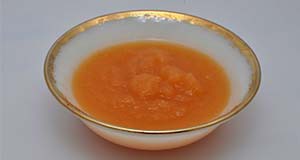
Puréed foods are an important source of nutrients for those who have problems chewing or swallowing. A puréed food is any item that has been processed into a smooth and uniform texture and therefore does not require chewing. Purées can be made from most foods and this guide provides some tips for fast and easy to prepare puréed foods. This four-page fact sheet covers the preparation of puréed foods from canned vegetables and fruits; beans, peas, and lentils; and mixed dishes. It also provides a useful example meal plan. Written by Wendy J. Dahl, and published by the Food Science and Human Nutrition Department.
http://edis.ifas.ufl.edu/fs277
Datos sobre la proteina
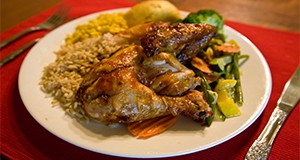 Our bodies are made of many proteins. They can make 11 of the amino acids that are needed to make protein but cannot make the other nine, so we must get them from our diet. This 3-page fact sheet is the Spanish version of Facts about Protein (FSHN15-01/FS261). It provides an overview of protein basics, roles of proteins in the body, recommended intake, sources of protein, and healthier protein choices. Written by Nicole C. Agro and Wendy J. Dahl, and published by the UF Department of Food Science and Human Nutrition.
Our bodies are made of many proteins. They can make 11 of the amino acids that are needed to make protein but cannot make the other nine, so we must get them from our diet. This 3-page fact sheet is the Spanish version of Facts about Protein (FSHN15-01/FS261). It provides an overview of protein basics, roles of proteins in the body, recommended intake, sources of protein, and healthier protein choices. Written by Nicole C. Agro and Wendy J. Dahl, and published by the UF Department of Food Science and Human Nutrition.
http://edis.ifas.ufl.edu/fs272
Shopping for Health: Breakfast Cereals
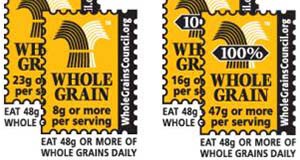
It is no secret that breakfast is an important meal. Eating breakfast provides you with physical and mental energy to start the day, along with vitamins and minerals. Cereal is a quick, versatile, and budget-friendly breakfast choice. The benefits of eating a healthy cereal include increased fiber intake and lower body weight. But navigating the cereal aisle at your local grocery store can be an overwhelming experience. Continue reading this three-page fact sheet to learn more about cereal and how to find your new go-to breakfast choices. Written by Jenna Sechar and Wendy J. Dahl, and published by the Food Science and Human Nutrition Department.
http://edis.ifas.ufl.edu/fs274




